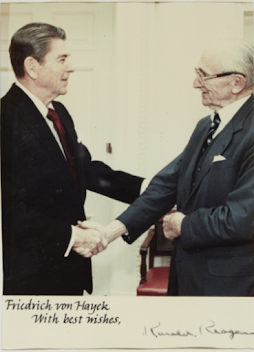Both “The Economics of the 1930s as Seen from London” and “Personal Recollections of Keynes and the Keynesian Revolution” were written in the 1960s. In them, Hayek recounted that after the release of The General Theory he had a feeling, vague but enduring, that in order to do a full critique of Keynes he would need to do more than to criticize his model. Hayek disagreed with Keynes on both theory and policy. But it was Keynes’s methodological approach, specifically his use of aggregates, that Hayek came to view in retrospect as being his opponent’s most dangerous contribution.
Now, it is easy to understand that Hayek might put things in this way in essays written in the 1960s. Macroeconomic modelling was then at its zenith, as was hubris about the economics profession’s ability to control the business cycle by applying fiscal ‘fine-tuning’. What doesn’t ring quite true in Hayek’s claim is that he was only vaguely becoming aware of this difference over methodology in the 1930s. As we saw in our discussion of Hayek’s earlier work on the United States economy, opposition to the use of statistical aggregates has long been a methodological principle among Austrians. Aggregates mask the movement of relative prices, and relative price movements are the central foci of Austrian theory.
—Bruce Caldwell, ed., editor’s introduction to The Collected Works of F. A. Hayek, vol. 9, Contra Keynes and Cambridge: Essays, Correspondence, by F. A. Hayek (Indianapolis: Liberty Fund, 1995), 42-43.

No comments:
Post a Comment